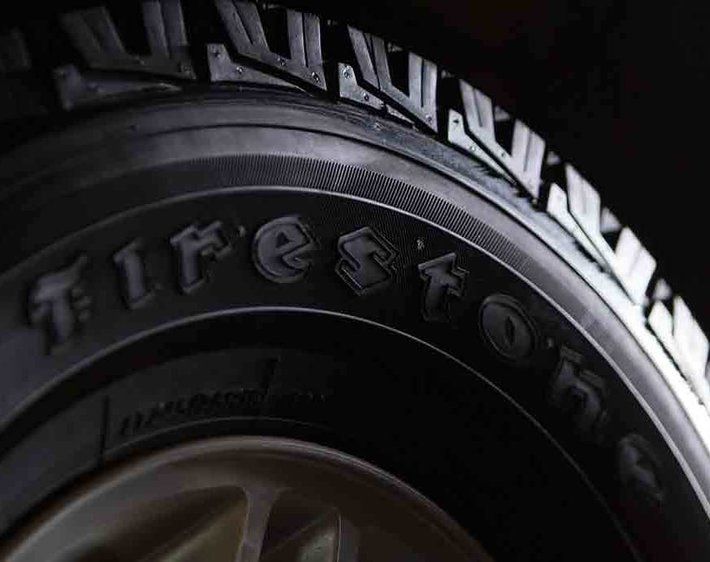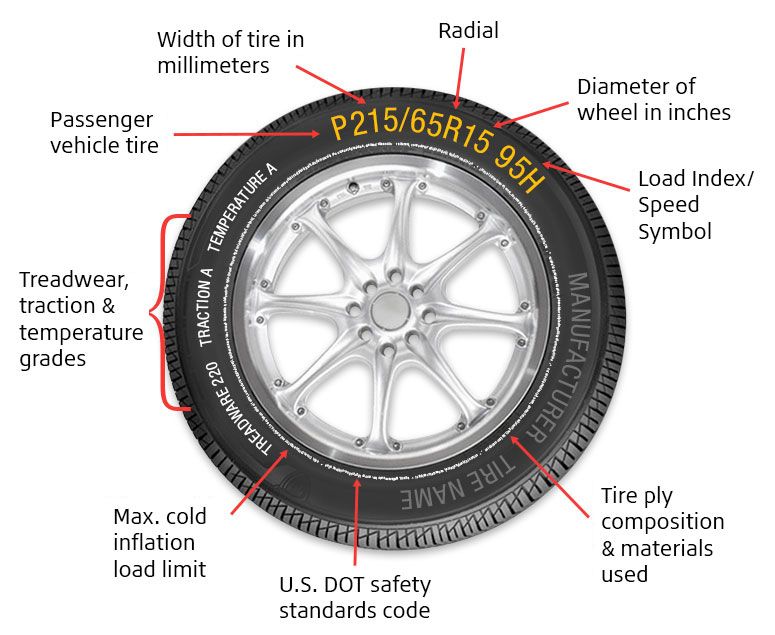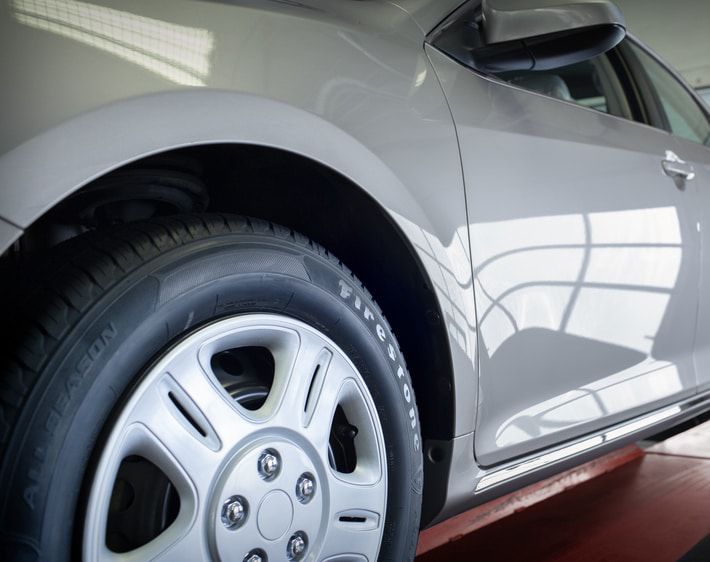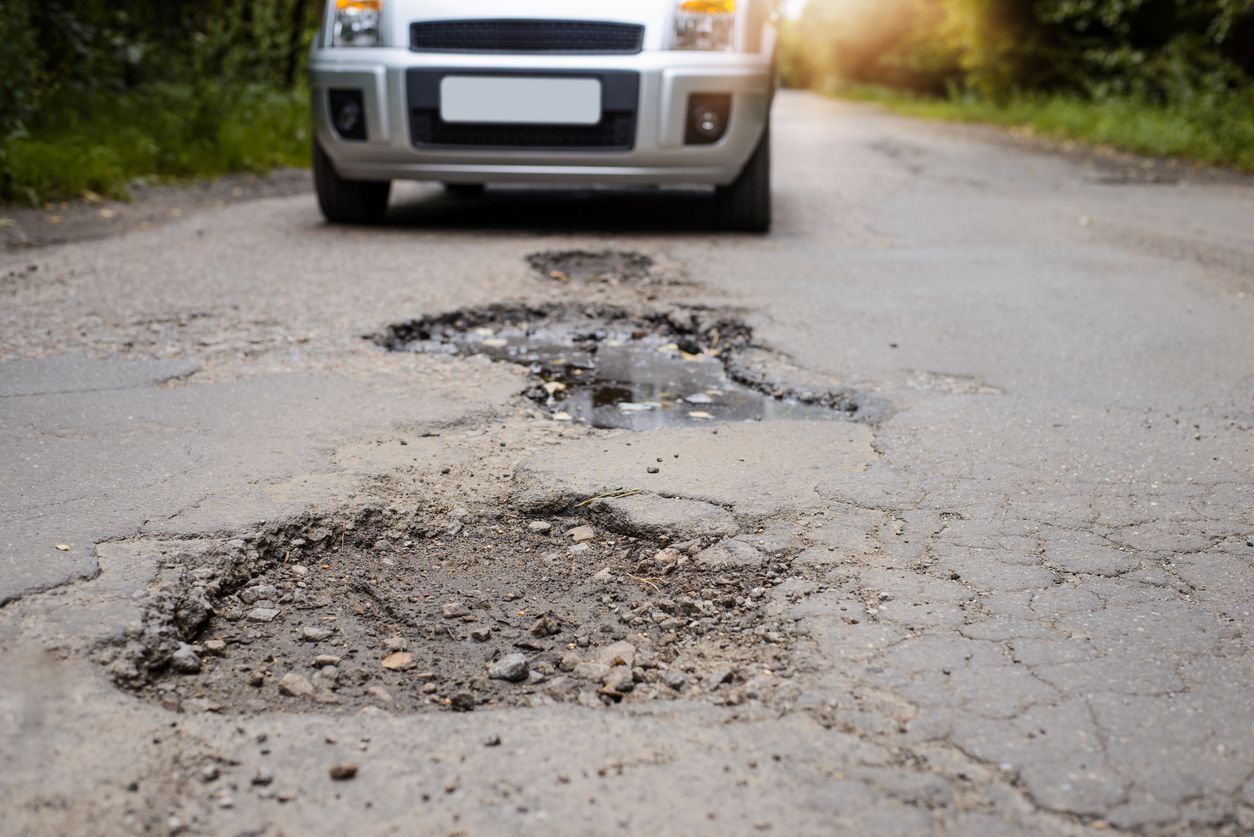Tires have numbers listed on the sidewall that tell you the tire’s type, width, aspect ratio, construction type, diameter, load index, and speed rating. Tire numbers change depending on these seven factors, but all manufacturers use the same tire code system.
Understanding what each number or letter means is the first step in knowing how to tell a tire’s size and whether it fits on your vehicle. But just because a tire is the right size doesn’t necessarily make it the best option. Your local Firestone Complete Auto Care can provide you with more in-depth information on how to check your tire size, expert recommendations on which tires are right for your vehicle, and professional service and installation. Schedule your visit with our tire experts today.
Where Do I Find My Tire Numbers?
The tire code is listed on the tire's sidewall and will typically be the largest sequence of numbers and letters. You can also find the tire code in the owner’s manual of your vehicle or on the driver’s side door jamb to see which tires your vehicle manufacturer recommends.
Tire Type and Tire Size Meanings and Examples
To learn how to read tire size dimensions, we’ll use the example numbers P215/65 R15 95H.
1. Tire type
Tire type is the first letter in the tire code sequence. You may see the letters P, LT, or ST. You may also occasionally see a tire with a T. In our example of P215/65 R15 95H, the code contains the letter P for passenger vehicle tire.
- P: Passenger vehicle tire. Typically rated for cars like sedans or coupes, crossovers, SUVs, minivans, and smaller trucks that don’t commonly carry loads or drive on gravel roads. These tires are not meant for off-road use or driving on rough or rugged terrain.
- LT: Light truck tires are a bit more heavy-duty and are designed for trucks or SUVs that typically carry heavy loads, tow trailers, or vehicles that often drive on rough or rugged terrain.
- ST: Special trailer tires are designed for trailers, campers, boat trailers, etc. These tires are intended only for trailer axles and should never be used on drive or steer wheels.
- T: Temporary tires, or spare tires, are marked with a T and should only be used to replace a flat tire temporarily.
Alternatively, some tires may not have this initial letter in the tire code sequence. This is most often the case with Euro-metric tires, which are typically interchangeable with tires with the P prefix. However, to ensure this is true for you, consult a local Firestone Complete Auto Care technician to confirm compatibility with your vehicle.
2. Tire width
Tire width is represented by the three numbers following the tire type letter. The numbers are the width of the tire in millimeters measured from sidewall to sidewall. In our example of P215/65 R15 95H, “215” means this tire is 215 millimeters wide from sidewall to sidewall.
3. Tire aspect ratio
The aspect ratio is a percentage that tells you the ratio of the tire’s height to its width. Height is measured from the edge of the wheel rim to the top of the tread. The larger the number, the taller the tire’s sidewall or profile.
In our example of P215/65 R15 95H, the aspect ratio number “65” means that the tire’s height is 65 percent of its width.
4. Tire construction type
Construction type is the letter following the two-digit aspect ratio. The most common letters are “R” for radial and “D” for diagonal. Occasionally, you may see “B” for belted bias. In our example of P215/65 R15 95H, the R designates the tire as having a radial construction.
- R: The “R” means that the layers run radially across the tire. Most tires on the road today are radial tires, meaning the internal layers are perpendicular to the axis of rotation (and the direction of travel).
- D: The “D” denotes a tire with a diagonal or bias ply construction. These tires have plies that are laid out in a diagonal, or crosshatch, pattern.
- B: The “B” indicates the tire has a belted bias, which is a diagonal bias tire reinforced with a diagonal belt of sturdy material like steel.
5. Wheel diameter
Wheel diameter consists of two numbers following the tire construction letter. In our P215/65 R15 95H example, the “15” means the tire would fit a rim with a 15-inch diameter. This is an important number, as it’s the number you’ll refer to when asked what your tire size is!
6. Load index
Load index is a two or three-digit number following the two-digit wheel diameter number. You may notice a bit of space between this number and the preceding ones. Tire load index tells you how much weight the tire can safely support. In our example of P215/65 R15 95H, “95” means the tire has a load capacity of 1,521 pounds.
Load index can range from 0 to 150, though most tires designed for passenger vehicles range from 75 to 100. The load index is also dependent on the tire’s actual inflation pressure.
7. Speed rating
Speed rating is the last letter in the tire code and indicates the top speed a tire is designed to ride. In our example of P215/65 R15 95H, “H” means the tire can travel a maximum speed of 130 mph under ideal conditions.
Occasionally, the speed rating may have a letter and a number, like A1. A1-A8 tires are designed to move at slower speeds. View the chart below to find your tire’s speed rating and corresponding speed capability.
| Speed Symbol | Speed (km/h) | Speed (mph) |
| A1 | 5 | 3 |
| A2 | 10 | 6 |
| A3 | 15 | 9 |
| A4 | 20 | 12 |
| A5 | 25 | 16 |
| A6 | 30 | 19 |
| A8 | 40 | 25 |
| B | 50 | 31 |
| C | 60 | 37 |
| D | 65 | 40 |
| E | 70 | 43 |
| F | 80 | 50 |
| G | 90 | 56 |
| J | 100 | 62 |
| K | 110 | 68 |
| L | 120 | 75 |
| M | 130 | 81 |
| N | 140 | 87 |
| P | 150 | 94 |
| Q | 160 | 100 |
| R | 170 | 106 |
| S | 180 | 112 |
| T | 190 | 118 |
| U | 200 | 124 |
| H | 210 | 130 |
| V | 240 | 149 |
| W | 270 | 168 |
| Y | 300 | 186 |
Tire Numbers: Why They Matter and How to Use Them
Now that you know the meaning of your tire numbers, you can use them to help you understand the limitations of your tires. Alternatively, knowing your wheel diameter can come in handy when shopping online for new tires.
If you are considering new tires, check out our latest tire deals and head to your nearest Firestone Complete Auto Care to talk with people who speak tire too! Our technicians are here for everything you need, from tire repair to tread depth checks and more.




